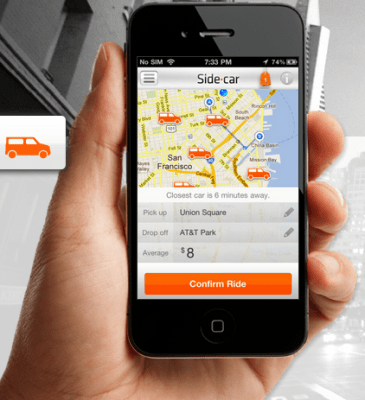It was just a few months ago that the California Public Utilities Commission was writing cease-and-desist letters and issuing citations against ride-sharing services like Lyft and SideCar. But today the regulator agreed to evaluate the safety of those services, in what in what could be a big step toward legitimizing ride-sharing in the state.
The CPUC, which regulates charter-party carriers in California, will be taking a look at services that “utilize the Internet, social media, and location services” as a way to connect drivers and riders. The regulator named ride-sharing services Lyft and SideCar, as well as Uber, as the types of services that it would evaluate in determining some balance between public safety and innovation.
While there’s still a lot left to be determined, the good news is that the CPUC is backing away from a more combative stance in which it was seeking to shut these services down. In August, it issued cease-and-desist letters against Lyft, SideCar, and Tickengo for operating unlicensed charter-party services. About a month ago, it went a step further by issuing citations and $20,000 fines against the two ride-sharing services, as well as Uber.
The Order Instituting Rulemaking could potentially create a new framework for ride-sharing services that legitimizes their operation. Currently, Lyft and SideCar don’t fit under its current charter-party classification. At the same time, they argue that their background checks, as well as reputation management systems that come from user-submitted ratings, go above and beyond existing CPUC regulations. The Order states:
“The Commission has a responsibility for determining whether and how public safety might be affected by these new businesses. The purpose of this Rulemaking is not to stifle innovation and the provision of new services that consumers want, but rather to assess public safety risks, and to ensure that the safety of the public is not compromised in the operation of these new business models.”
In evaluating these new services, the CPUC is seeking comment on issues related to “consumer protection and safety implications of the new methods for arranging transportation services; whether and how the new transportation business models differ from longstanding forms of ridesharing; and the new transportation business models’ potential impact on insurance and transportation access.” Those who wish to comment will be able to do so over the next 30 days, and the CPUC plans to come to a ruling sometime over the next six months.
California isn’t the only state looking to revise transportation regulations due to new services cropping up. The city council of Washington, DC recently approved a measure that legitimized e-hailing services in the district. And the New York City Taxi And Limousine Authority also agreed to allow e-hail apps in the city.
In a phone conversation, SideCar founder Sunil Paul called the decision an important first step in what will probably be a long process of looking at ridesharing as a viable alternative to other transportation services. “This shows there’s a recognition by the PUC that this is a new medium and we need new rules,” Paul said. While this was a small win, he said that in the end, “We think that innovation will win out over an antiquated regulatory approach.”
Meanwhile, Zimride and Lyft founder John Zimmer responded by email:
“This is a positive step forward demonstrating that Lyft and the CPUC share the common belief that innovation paired with safety is what matters most. It shows that policymakers are listening to the Lyft community, and that they understand the important economic, environmental, and social benefits that platforms like Lyft bring to a city. Lyft has not only innovated with technology, but also with its safety measures. We have a criminal background check, DMV record check and $1 million excess liability insurance policy that all exceed measures taken by currently regulated entities. Building a community that values safety as a top priority has enabled our platform to reach tens of thousands of users in the first few months.”
